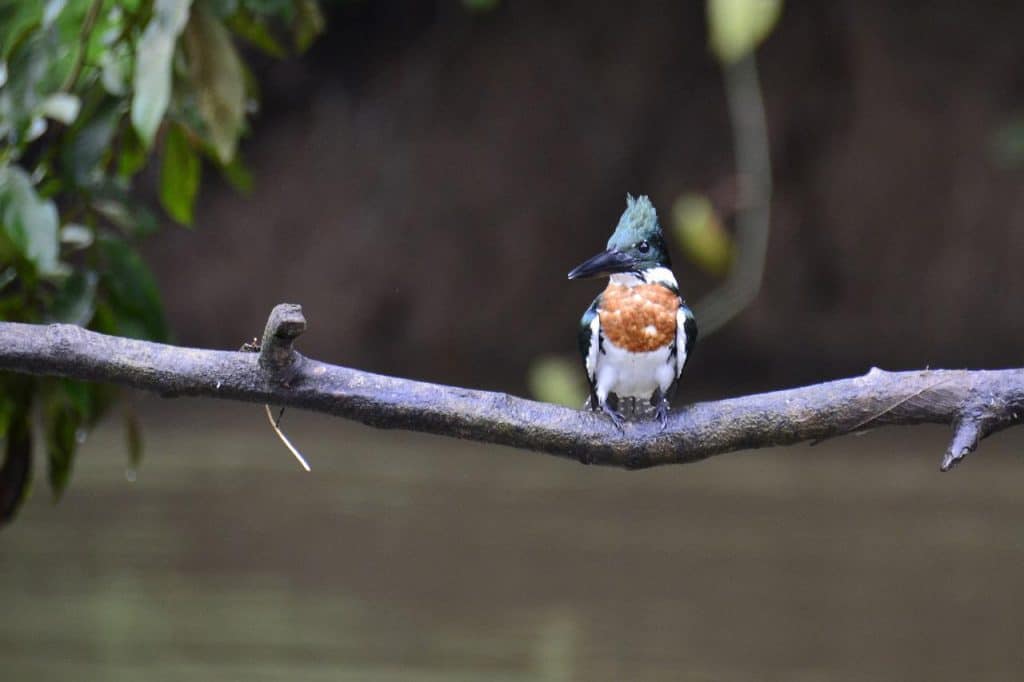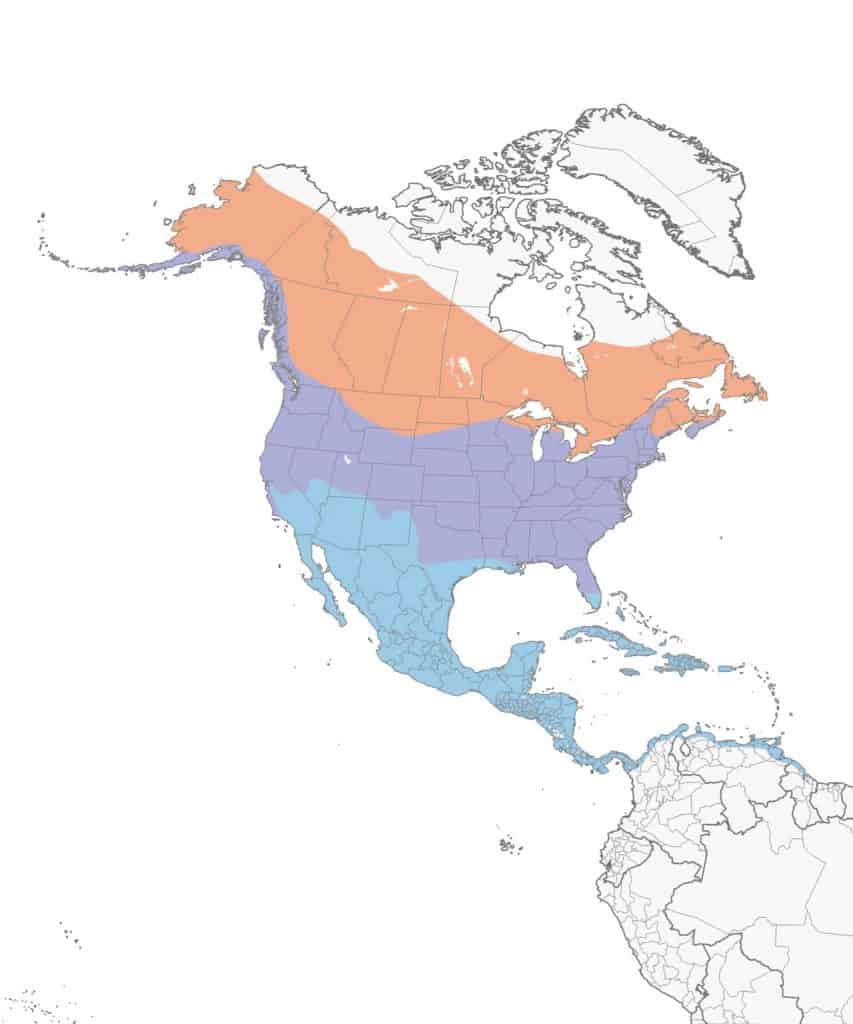
Appearance: The belted kingfisher is a large 13″ long bird with a large head, long bill, and stocky body. Blue/gray throughout with white ring around neck and white chest. The Female is the same but with an additional chestnut band on her chest.
Diet: Large 13″ long bird with a large head, long bill, and stocky body. Blue/gray throughout with white ring around neck and white chest. The Female is the same but with the additional chestnut band on the chest.
Feeder food: Unlikely to come to the feeder but often attracted to yards with streams or ponds.
Habitat: Near streams, rivers, ponds, lakes, and calm marine waters – especially unclouded water with little vegetation.
Nesting: Belted kingfishers dig burrows along the water’s edge for their nest. 1-2 broods/season, 5-8 eggs/brood – large white glossy eggs (1.5″ long), 22-24 days incubation.
Migration: Many but not all belted kingfishers are migrators. In spring, the migrators will head north into Montana, North Dakota, northern Minnesota, Canada, and Alaska to breed and raise their young. When fall comes the migrators head back south – as far south as Arizona, New Mexico, southern California, and Mexico.
Year-round range: All US states (except North Dakota and Arizona) and the pacific coast of Canada’s British Columbia.
Breeding range: While some stay in their year-round range, many others migrate north into Montana, North Dakota, northern Minnesota, Canada, and Alaska to breed and raise their young. When fall comes the migrators head back south – as far south as Arizona, New Mexico, and southern California.
Winter range: While many belted kingfishers migrate south for winter, just as many remain in their year-round range when the temperatures dip.
Range Map


